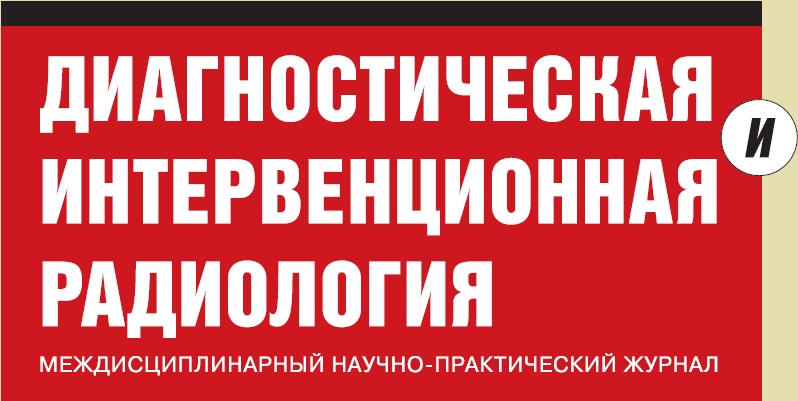|
ключевые слова:
|
Аннотация: В обзоре представлен критический анализ литературы по проблеме использования мультиспиральной компьютерной томографии (МСКТ) в качестве альтернативы традиционному вскрытию трупа в судебно-медицинской экспертизе скоропостижной смерти, связанной с поражением органов-мишеней при артериальной гипертензии (АГ). При подготовке обзора были использованы основные интернет-ресурсы: научная электронная библиотека (elibrary), SciVerse (ScienceDirect), Scopus, PubMed и Discover. В обзор включены только те статьи, в которых обсуждались как преимущества, так и ограничения посмертной МСКТ в судебномедицинской экспертизе скоропостижной смерти взрослых лиц. В ходе анализа доступной литературы, авторы обсуждают проблему использования посмертной МСКТ в визуализации осложнений артериальной гипертонии: инфаркта миокарда, нарушения мозгового кровообращения, разрыва аневризмы и расслоения стенки аорты. Авторы попытались ответить на вопрос о возможностях посмертной МСКТ в качестве альтернативы традиционному вскрытию трупа. Выводы: нативная МСКТ подходит для визуализации внутричерепных кровоизлияний и их дифференциальной диагностики с черепно-мозговой травмой. Метод с ограничениями подходит для диагностики ишемических инсультов, аневризмы и расслоения аорты. Возможности нативной МСКТ в диагностике скоропостижной смерти, связанной с патологией коронарных артерий, инфаркта миокарда и тромбоэмболии легочной артерии значительно ограничены. Использование посмертной КТ-ангиографии расширяет возможности метода в диагностике поражений коронарных артерий, аорты и легочной артерии. Основное преимущество посмертной МСКТ при скоропостижной смерти - возможность визуализации скрытых механических повреждений в случаях отказа родственников от вскрытия трупа. Список литературы 1. Судебная медицина и судебно-медицинская экспертиза: национальное руководство. Под ред. Ю. И. Пиголкина. М.: Гэотар-Медиа, 2014; 664-679. 2. Rukovodstvo po sudebnoj medicine [Guide to Forensics.]. Pod red. V. N. Krjukova, I. V. Buromskogo. M.:OAO Izdatel'stvo Norma. 2014; 364-371[In Russ]. 3. Thali M. J., Yen K., Schweitzer W., Vock P., Boesch C.,Ozdoba C., Schroth G., Ith M., Sonnenschein M., Doernhoefer T., Scheurer E., Plattner T., Dirnhofer R. Virtopsy, a new imaging horizon in forensic pathology: virtual autopsy by postmortem multislice computed tomography (MSCT) and magnetic resonance imaging (MRI) a feasibility study. J. Forensic Sci. 2003; 48 (2): 386-403. 4. Levy A.D., Harcke H.T., Mallak C.T. Postmortem imaging: MDCT features of postmortem change and decomposition. Am. J. Forensic Med. Pathol. 2010 Mar; 31(1):12-7. 5. Grabherr S., Djonov V., Friess A., Thali M.J., Ranner G., Vock P., Dirnhofer R. Postmortem angiography after vascular perfusion with diesel oil and a lipophilic contrast agent. AJR. Am. J. Roentgenol. 187 (5): W515-23. 6. Jackowski C., Persson A., Thali M.J. Whole body postmortem angiography with a high viscosity contrast agent solution using poly ethylene glycol as contrast agent dissolver. J.Forensic.Sci. 2008;53(2):465-8. 7. Murakami T., Uetani M., Ikematsu K., Nagasaki J.P. Postmortem CT in emergency deparment: Influence of cardiopulmonary resuscitation. European Society of Radiology. EPOS. C-1440. 8. Shiotani S., Kohno M., Ohashi N., Yamazaki K., Itai Y Postmortemintravascularhigh-densityfluidlevel (hypostasis): CTfindings. J. ComputAssistTomogr. 2002 NovDec; 26(6):892-3. 9. Yamazaki K., Shiotani S., Ohashi N., Doi M., Honda K. Hepatic portal venous gas and hyper-dense aortic wall as postmortem computed tomography finding. LegMed (Tokyo). 2003 Mar; 5Suppl 1:S338-41. 10. Shiotani S., Kohno M., Ohashi N., et al. Hyperattenuating aortic wall on postmortem computed tomography (PMCT). Radiat. Med. 2002; 20(4): 201-6. 11. Christe A., Flach P., Ross S., Spendlove D., Bol- liger S., Vock P., Thali M.J. Clinical radiology and postmortem imaging (Virtopsy) are not the same: Specific and unspecific postmortem signs. LegMed (Tokyo). 2010 Sep;12(5):215-22. 12. Takahashi N., Satou C., Higuchi T., Shiotani M., Maeda H., Hirose Y Quantitative analysis of brain edema and swelling on early postmortem computed tomography: comparison with antemortem computed tomography. Jpn. J. Radiol. 2010 Jun;28(5):349-54. 13. Zerbini T., Ferrazda SilvaI L.F., Gongalves Ferro A.C., et al. Differences between postmortem computed tomography and conventional autopsy in a stabbing murder case. Clinics. 2014 SroPaulo Dec; 69:10. 14. Schnider J., Thali M. J., Ross S., Oesterhelweg L., Spendlove D., Bolliger S.A. Injuries due to Sharp trauma detected by post-mortem multislice computed tomography (MSCT): a feasibility study. Leg Med (Tokyo). 2009;11(1):4-9. 15. Cha J.G., Kim D.H., Kim D.H., Paik S.H., Park J.S., Park S.J., et al. Utility of postmortem autopsy via whole-body imaging: initial observations comparing MSCT and 3.0T MRI findings with autopsy findings. Korean J. Radiol. 2010;11(4)395-406. 16. Takahiro Z., Teruhiko T., Miyamoto M., Yamaguchi S., Endo T., Inaba H. Intravascular gas in multipleorgans detected by postmortem computed tomography: effect of prolonged cardiopulmonary resuscitation on organ damage in patient swith cardiopulmonary arrest. Jpn. J. Radiol. 2011; 29(2):148-51. 17. Shiotani S., Kohno M., Ohashi N., Atake S., Yamazaki K., Nakayama H. Cardiovascular gas on non-traumatic post-mortem computed tomography (PMCT): thein- fluence of cardiopulmonaryre suscitation. Radiat. Med. 2005 Jun;23(4):225-9. 18. Pedal I., Moosmayer A. Mallach H.J., et al. Air embolism or putrefaction? Gas analysis ndings and their interpretation. Z. Rechtsmed. 1987;99:151-67. 19. Patzelt D., Lignitz E., Keil W., et al. Diagnostic problem of air embolism in acorpse. Beitr Gerichtl Med. 1997;37:401-5. 20. Ruder T.D., Ross S., Preiss U., Thali M.J. Minimally invasive post-mortem CT-angiography in a case involving a gunshot wound. LegMed (Tokyo). 2010;12(2):57-112. 21. Ward A. Forensic radiology: The role of crosssectional imaging in virtual post-mortem examinations Joshua Higginbotham-Jones. Radiography. 2014; 1(20): 87-90. 22. Pohlsgaard C., Leth PM. Post-mortem CT-coronary angiography. Scandinavian Journal of Forensic Science. 2007;13:8-9. 23. Grabherr S., Gygax E., Sollberger B., et al. Two- step postmortem angiography with a modi








